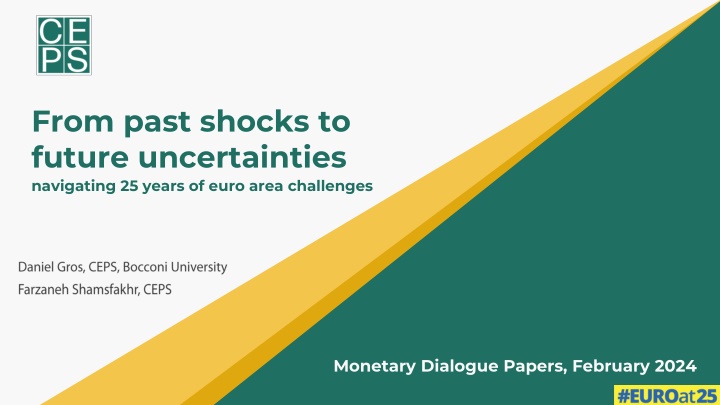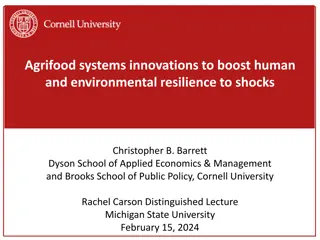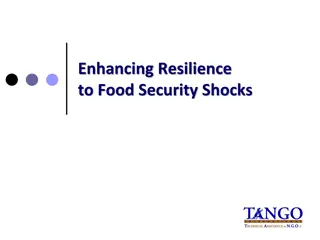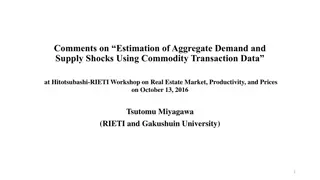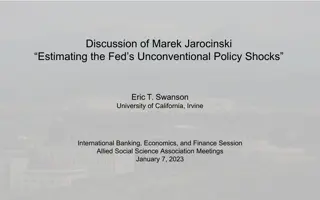Navigating 25 Years of Euro Area Challenges: From Past Shocks to Future Uncertainties
Explore the journey of the Euro area over 25 years, from past challenges to current uncertainties. Dive into construction investments, real loans to NFC, and insights on Germany and Southern countries. Conclude with valuable observations on the economic landscape.
Download Presentation

Please find below an Image/Link to download the presentation.
The content on the website is provided AS IS for your information and personal use only. It may not be sold, licensed, or shared on other websites without obtaining consent from the author.If you encounter any issues during the download, it is possible that the publisher has removed the file from their server.
You are allowed to download the files provided on this website for personal or commercial use, subject to the condition that they are used lawfully. All files are the property of their respective owners.
The content on the website is provided AS IS for your information and personal use only. It may not be sold, licensed, or shared on other websites without obtaining consent from the author.
E N D
Presentation Transcript
From past shocks to future uncertainties navigating 25 years of euro area challenges Monetary Dialogue Papers, February 2024
Construction investment (EUR bn) 500 450 400 350 300 250 200 150 100 50 0 2024F 2025F 1992 1993 1994 1995 1996 1997 1998 1999 2000 2001 2002 2003 2004 2005 2006 2007 2008 2009 2010 2011 2012 2013 2014 2015 2016 2017 2018 2019 2020 2021 2022 2023 Germany Southern countries
Real loans to NFC 0.3 0.08 0.06 0.2 0.04 0.1 0.02 0 0 -0.1 -0.02 -0.2 -0.04 -0.3 -0.06 -0.4 -0.08 1999Q1 1999Q3 2000Q1 2000Q3 2001Q1 2001Q3 2002Q1 2002Q3 2003Q1 2003Q3 2004Q1 2004Q3 2005Q1 2005Q3 2006Q1 2006Q3 2007Q1 2007Q3 2008Q1 2008Q3 2009Q1 2009Q3 2010Q1 2010Q3 2011Q1 2011Q3 2012Q1 2012Q3 2013Q1 2013Q3 2014Q1 2014Q3 2015Q1 2015Q3 2016Q1 2016Q3 2017Q1 2017Q3 2018Q1 2018Q3 2019Q1 2019Q3 2020Q1 2020Q3 2021Q1 2021Q3 2022Q1 2022Q3 2023Q1 Southern countries Germany-RHS
